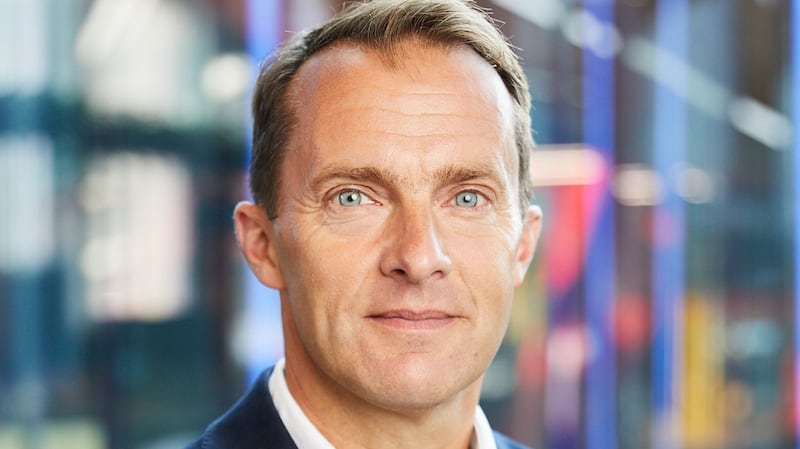Samsung is aiming to push its folding phones into the mainstream, overcoming the pandemic and the ongoing chip supply issues as it tries to carve out a new category.
"This is the beginning of a new era, we expect. Our ambition is to make foldable devices mainstream," said Conor Pierce, corporate vice-president of Samsung in the UK and Ireland.
Samsung has been down this road before. When the Note was released in 2011, there were doubters. No one really knew what to make of a 5.3 inch phone that carved out its own category; but despite the critical reception, it sold, and in enough quantities that Samsung came back for another version, and another.
Fast forward to 2019 and the launch of the Samsung Fold gave the South Korean electronics giant another chance to change the mobile industry. A 4.6 inch display on the cover and a 7.3 inch display when folded out was intended to combine the best of phones and tablets.
Issues
But there were teething issues with the screen, forcing Samsung to delay its launch. Then came the Z Fold2 in 2020, which went a long way to correcting the mistakes of the early devices.
“The last two years have been instrumental in learning how people use the device and, more importantly, what they’d like to see in the future,” said Mr Pierce.
One of those demands, he said, was more durability. Samsung addressed that with a toughened case made from “armour aluminium” and a more robust screen, plus the IPX8 water resistance.
Another was improved multitasking, and apps that would make the most of the device’s Fold3’s 7.6 inch screen. That screen now also includes an under-display camera that ditches the punch hole in the screen.

“It’s not just the device. It’s also the partnerships,” said Mr Pierce. “We have recognised that the previous devices, the applications that people wanted weren’t necessarily optimised for the screen size, which has now been resolved for the top 100 applications. I think it’s only going to improve as developers lean into this new platform.”
The release of the Fold3 and Flip3 replaced the usual Note release, which Samsung has traditionally held in August.
That would leave a hole in the company’s flagship plans. The foldable devices are filling this gap for some; Mr Pierce said there had been a good uptake of Fold3 devices among Note owners, said, by Samsung, to be the most loyal of its customers. The key driver of this may be the larger screen size and the S Pen support that Samsung has introduced with the new device.
But although Mr Pierce wouldn’t be drawn on the future of the Note line, he doesn’t think the chip shortage will ultimately hold back Samsung’s plans for the foldable phones.
“[The shortage] is not specific to telecoms, it’s universal across many industries. There has been lots of talk about projections and predictions. However, Samsung is in a very strong position in that we are one of the largest, if not the largest, semiconductor manufacturers in the world, as well as display manufacturer,” said Mr Pierce.
Supply
“So we’re very confident that we’ll be in a position to give the full supply for the Fold3 and Z Flip3. We have probably the best ever support from our partners to really drive this category. It’s important that we don’t let the consumers down, but also our partners have put a huge amount of effort to help us build this category.”
Part of this strategy is getting people to try out the new devices, which has been made more challenging by a pandemic. Samsung has invested in retail and updated its digital experience in an attempt to let people get the best feel for the Fold3 and Flip3.
“I think we’re very confident, and back to the strong optic on pre-orders, we’re in a strong position. I think we have an enviable opportunity to really lead in this category,” said Mr Pierce.
“We established this category and we’re determined to keep the lead. Maybe one day, our competition will catch up with us.”











